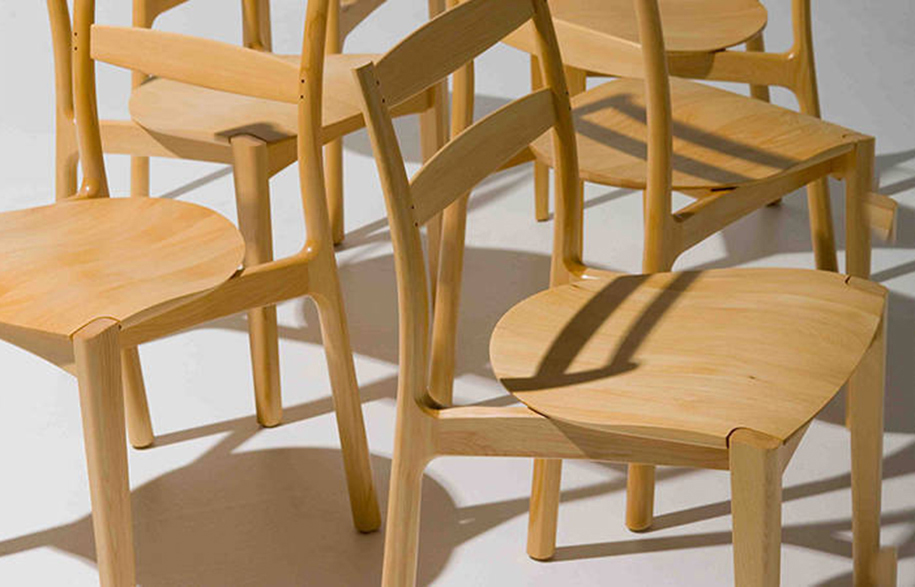There’s a sequel to the Cheap Coffee Table saga. The other day my husband found an identical table dumped outside someone else’s house. He brought it back for me excitedly explaining we now had a back-up, but I don’t want it and I can’t even give it away.
I read that in Greater Sydney alone a weight the equivalent of 3.4 million coffee tables is taken to landfill each year (and that doesn’t include illegal dumping or those delivered directly to tips).
It’s my fault, says Kevin Morgan, director of consultancy EC Sustainable. He reminds me that furniture made overseas in engineered wood and veneer is never going to be repaired. Yup. It is now much cheaper to replace than repair, which is just costing the environment.
But is it realistic to think the average consumer could afford, or would be willing to pay more for, locally made furniture in quality materials?
Back in 2009 we were fortunate enough to have an eight-seater dining table handmade by our friend Myles Gostelow, the high-chair fixer-upper and a fine furniture maker who exemplifies the true meaning of the word ‘materialist’. Oh the joy that is our skilfully handcrafted table! In fact it was a collaboration between Myles and his former fellow at ANU School of Art & Design, Rohan Ward, my husband’s best man who moved to Chicago and was therefore unable to build the table he’d designed for us before our wedding. The Tasmanian Oak on top has a tight fiddleback, the mortise and tenon joints of the legs peep through and feature tiny wedges of ebony and the minutest indentations hand-carved by Myles on a whim. Each corner’s two Tasmanian Blackwood legs come together as one to represent our marital union. Sometimes I lie under it and smile at the hand-carved names of its co-makers. Rohan Ward went on to receive an off-the-charts commission from the White House. Barack Obama needed a table to present to French president Francoise Holland to commemorate his State Visit in 2014.
Not all of us count artisanal carpenters among our close circle of friends, and most of us blindly conform to the mass-produced decor model because the alternative of sourcing locally handmade or commissioning bespoke furniture just seems elitist. An architect friend of mine scoffed at my heartfelt evangelising that middle-income families might contemplate holding off on their next car to save $8000 for a dining table.
I’m not alone though; Australian start-ups trying to educate consumers to buy more sustainably for the home include Handkrafted and Makers Lane. The latter encourages customers to share their design ideas online with a large community of small and medium makers who can tender for the business. Founder Clare Gilligan believes this transparent model of tendering, and the fact her business supports customers through the entire process, helps those new to bespoke to understand and trust its value. There are ready-made designs available too and since the makers are able to do small-batch runs the prices aren’t inaccessible. The higher bespoke prices tend to be about double what you might pay at a mid–premium homewares store, but on top of assured quality is the promise of ongoing maintenance by the makers themselves. Forget your limited warranties.
Myles works to commission only, and his pieces can take four months from conception, but during that time you get to collaborate, visit his studio in Tharwa, ACT, and watch him at work. He might invite you to choose the timber or show you the air-drying or milling process. He wants you to know the true value behind the piece; sometimes he even creates a book documenting its story.
What Myles really wants is for his pieces to become heirlooms, a hitherto archaic concept that many makers are trying to bring back. If we are emotionally invested in a piece as well as financially, he believes that’s enough, plus he always considers the pragmatic aspects of handing furniture on. He’s currently making a large library unit as a modular so that when it’s passed down to the client’s children, they can each take a unit or two and happily move it into their own smaller homes.
Emotional connection grows even deeper if there’s a personal provenance to the material. Myles is often presented with a specific tree, which he mills and air-dries over a year at home before collaborating with the client on its reincarnation. Myles genuinely values materials – from a plastic high chair to a soon-to-be-culled street tree. When his arborist contacts tells him of an impending tree lop, he drives over and scoops it up onto the back of his ute in heroic fashion. “It’s not economical for me as that’s a lot of work to get a small volume of timber,” says Myles, “but I’m saving the timber from being thrown on a tip or chipped.”
Short of commissioning a one-off by Myles, skilled makers are easier to directly source in the era of Instagram, especially those just starting out who might come with a discount. Student exhibitions are another great way to enter the world of woodwork and crafts.
We use that table every day, more often than we use our $20,000 car. We expect that’ll do us for another six years or so. The dining table? It will be passed down through generations.
Words by Joanne Gambale

